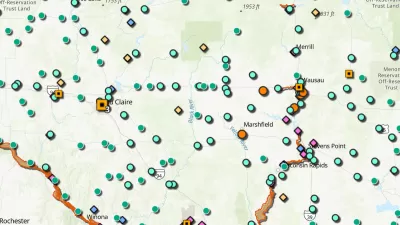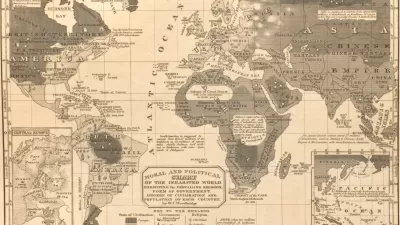The WikiLeaks release revealed the locations of a set of infrastructural sites operated by the United States all across the world. This piece from Domus looks at the geographical and geopolitical implications of this network.
Written by Geoff Manaugh of BLDGBLOG, the article explores how the release of this data is both revealing of the vulnerability of this network and also of the hidden extent of the U.S.' global reach.
"That is what made the controversial release by WikiLeaks, in December 2010, of a long list of key infrastructural sites deemed vital to the national security of the United States so interesting. The geographic constellation upon which the United States depends was suddenly laid bare, given names and locations, and exposed for all to see.
The particular diplomatic cable in question, originally sent by Secretary of State Hillary Clinton to all overseas embassies in February 2009 and marked for eventual declassification only in January 2019, describes what it calls "critical foreign dependencies (critical infrastructure and key resources located abroad)". These "critical dependencies" are divided into 18 sectors, including energy, agriculture, banking and finance, drinking water and water treatment systems, public health, nuclear reactors and "critical manufacturing." All of these locations, objects or services, the cable explains, "if destroyed, disrupted or exploited, would likely have an immediate and deleterious effect on the United States". Indeed, there is no back up: several sites are highlighted as "irreplaceable"."
FULL STORY: Open Source Design 02: WikiLeaks Guide/Critical Infrastructure

Alabama: Trump Terminates Settlements for Black Communities Harmed By Raw Sewage
Trump deemed the landmark civil rights agreement “illegal DEI and environmental justice policy.”

Planetizen Federal Action Tracker
A weekly monitor of how Trump’s orders and actions are impacting planners and planning in America.

Why Should We Subsidize Public Transportation?
Many public transit agencies face financial stress due to rising costs, declining fare revenue, and declining subsidies. Transit advocates must provide a strong business case for increasing public transit funding.

Understanding Road Diets
An explainer from Momentum highlights the advantages of reducing vehicle lanes in favor of more bike, transit, and pedestrian infrastructure.

New California Law Regulates Warehouse Pollution
A new law tightens building and emissions regulations for large distribution warehouses to mitigate air pollution and traffic in surrounding communities.

Phoenix Announces Opening Date for Light Rail Extension
The South Central extension will connect South Phoenix to downtown and other major hubs starting on June 7.
Urban Design for Planners 1: Software Tools
This six-course series explores essential urban design concepts using open source software and equips planners with the tools they need to participate fully in the urban design process.
Planning for Universal Design
Learn the tools for implementing Universal Design in planning regulations.
Caltrans
Smith Gee Studio
Institute for Housing and Urban Development Studies (IHS)
City of Grandview
Harvard GSD Executive Education
Toledo-Lucas County Plan Commissions
Salt Lake City
NYU Wagner Graduate School of Public Service





























